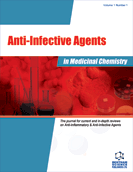Abstract
Quinolones are of clinical and scientific interest since their discovery based on the nalidixic acid in the early 1960s. They are based on two types of ring structures, the quinolone nucleus and the naphthyridone nucleus. Nalidixic acid as the first discovered agent is a naphthyridone and has only a moderate activity against Gram-negative rods. The modification of the quinolone and naphthyridone structures resulted in increasing activities of the quinolones against Gram-negative, Gram-positive, atypical and obligately anaerobic bacteria and mycobacteria. The quinolones are now divided into four groups due to their different spectrum of activity. The first and second group of quinolones i.e. norfloxacin, ciprofloxacin or ofloxacin have no or only little activity against obligately anaerobic bacteria. In contrast, the newer quinolones like sitafloxacin, clinafloxacin, trovafloxacin, moxifloxacin, gatifloxacin, garenoxacin and others like i.e. WCK 771 and ATB-492 have significant improved activities against anaerobes. Thus, these quinolones have been considered for the treatment of anaerobe and mixed infections. The present review provides an overview of the activities of quinolones against obligately anaerobic bacteria as described by in vitro as well as in vivo studies.
Keywords: Quinolones, naphthyridones, anaerobes, aerobe/anaerobe mixed infections
 19
19





















